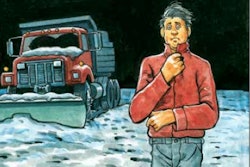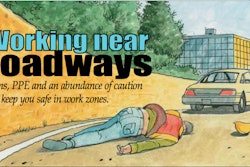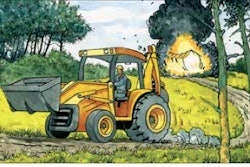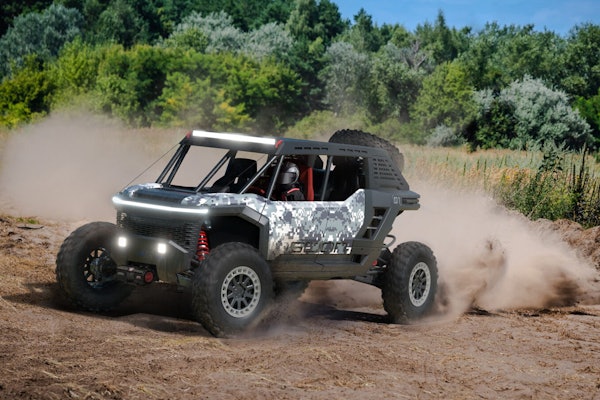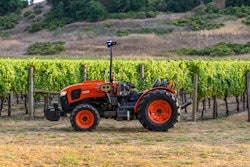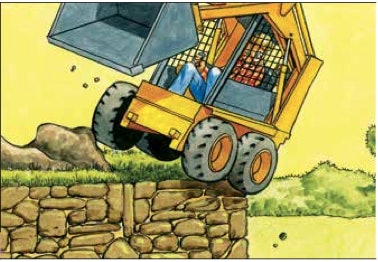
The accident: A 43-year-old landscape worker was using a skid-steer loader to spread topsoil in preparation for grass seeding near a retaining wall. After dumping a load of soil, he turned the loader around and backed toward the 6-foot-high wall. The left rear tire, then the right rear tire went over the wall. The machine fell on its back and came to rest on its left side. The operator, who was not wearing his seat belt, was knocked out of the seat. Co-workers heard the impact and found him unconscious, with his head and chest wedged between the seat and side screen. The medical examiner pronounced him dead of asphyxiation due to airway occlusion.
What the expert says: Being unaware of surroundings is a common mistake skid-steer operators make, notes Richard Clark, head landscape gardener at the University of Missouri Kansas City. People get comfortable with their environment and begin operating too quickly, which is particularly dangerous with skid steers because sight lines to the left, right and rear are limited. “They get in a rhythm of moving, do a quick turn and hit someone standing to the side, or back over someone or something,” he says.
Because skid steers have become common equipment on many jobsites, workers might not recognize the hazards associated with operating or working near them, says Mark Troxell, director of safety services at the Graham Company, a Philadelphia-based insurance brokerage and risk management firm.
Knowing how to operate one skid steer doesn’t mean you know how to operate all skid steers, Clark warns. Some machines are hand operated, some are foot operated, others have joysticks, and the three types differ significantly. Before operating any skid steer, you should read its operator’s manual and be trained by someone skilled in using the machine, Clark says.
Ignoring the loader’s limitations is another typical mistake. Due to differences in weight distribution, you should drive some skid steers forward up a slope while you have to back up a slope with others. You’ll find information about safely operating on slopes in the manual.
Following these guidelines will minimize your accident risks:
• Survey your surroundings and note any obstacles before getting in the machine. Wear a hardhat, goggles and hearing protection.
• Ensure all safety systems/devices are in place and working properly before operating. Don’t modify, disable, or override any safety system. Of the 100 accidents OSHA recorded from 1997 t0 2007, bypassing of safety features was the direct cause of 20 percent, with all but one resulting in a fatality.
• Don’t attempt to activate controls unless seated with the seat belt fastened and restraint bar in place.
• Keep bystanders out of your work area.
• Try to be on level ground when turning, loading or unloading. Carry loads as close to the ground as possible.
• Lower the bucket to the ground, set the parking brake and turn off the engine before exiting the seat.
